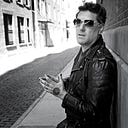
Member-only story
Alice Bailey: Progress & Perils of a Modern Occultist
Of all the twentieth-century migrants from Theosophy, among the most remarkable is Alice Bailey (1880–1949), an esoteric teacher who began her career in the Theosophical Society and soon branched off to found her own widely influential school, publisher, and spiritual groups.
Bailey’s life and myriad work dramatize the soaring progress and depressing pitfalls of occult expression in the twentieth century.

Born Alice La Trobe-Bateman, Bailey was the product of a wealthy but isolated and deeply unhappy British childhood. Her father, Bailey wrote, was indifferent toward her and her mother died when she was six. She described herself in her unfinished autobiography as “skinny, scared, and startled looking.”
The future seeker attempted suicide three times before age 15. After her third failed attempt, a mysterious turbaned master — whom she later identified as Theosophy’s Koot Hoomi — visited the tormented adolescent to speak of her life mission, giving the outcast a dramatic new sense of dispensation and direction. [1]

As she grew older, Bailey, like Madame H.P. Blavatsky in an earlier generation, claimed tutelage to hidden adepts or masters, including a previously unidentified figure called “The Tibetan” or Djwhal Khul.
In 1907, Alice met a future Episcopal priest whom she married and accompanied to America for his seminary studies. As tensions deteriorated into beatings, Bailey once more fell into desperation. The abusive marriage ended in 1915, leaving Alice, mother of three daughters, destitute and forced to work at a sardine cannery in Pacific Grove, California. [2]
